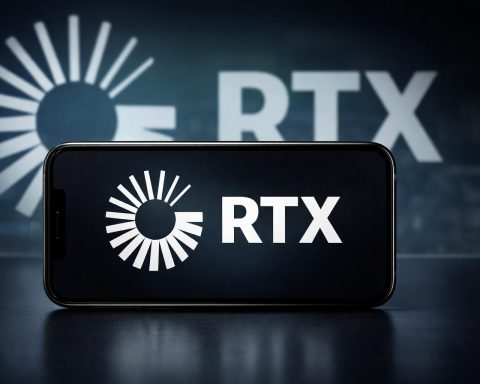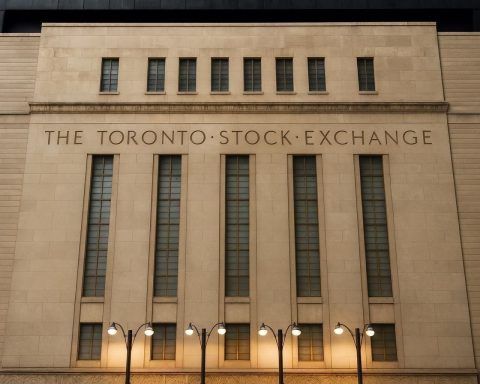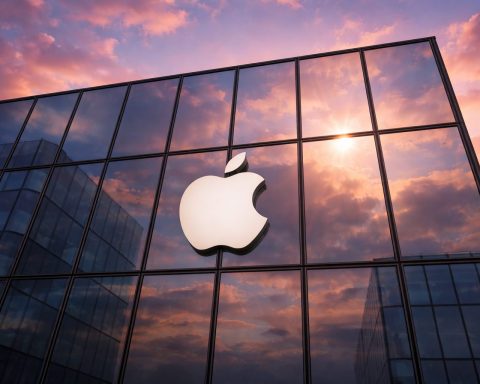Recent Performance and Price Action
Vanguard’s S&P 500 ETF (VOO) has been riding high in 2025, reaching record levels alongside its benchmark index. The ETF is up roughly 15–18% year-to-date and about 13–14% over the past year (as of mid-November 2025) [1]. In fact, the S&P 500 itself closed at 6,728.80 on November 7 – near an all-time high and edging toward the 7,000 mark [2]. This surge has been fueled by a powerful rally in mega-cap technology stocks and optimism around artificial intelligence (AI). VOO’s price recently climbed into the low-$600s per share, reflecting the broader market’s strength.
Despite the strong uptrend, volatility has crept back in. VOO fell about 1.6% in a single day on November 14, its sharpest one-day drop in a month [3]. The pullback came as investors grappled with renewed uncertainty over Federal Reserve policy and concerns of a potential “AI bubble” in tech stocks [4]. Even after this stumble, VOO remains up roughly 17% year-to-date [5] – a testament to 2025’s robust gains. The fund’s five-day net inflows of about $3 billion heading into mid-November show that investors have largely used dips as buying opportunities [6]. Overall, VOO’s recent price action reflects a market near highs but prone to bouts of profit-taking as it digests a year of big gains.
Fed Policy and Economic Indicators Drive Sentiment
Federal Reserve policy has become a pivotal market driver for VOO as 2025 draws to a close. After an aggressive rate-hike cycle earlier, the Fed shifted stance this fall – and economists overwhelmingly predict another interest rate cut in December 2025 [7]. The Fed already cut rates by 0.25% in October, bringing the target range down to 3.75–4.00%, and a similar cut in December is expected to lower rates to around 3.5–3.75% [8]. This tentative “Fed pivot” toward easing is motivated by a cooling economy and softer labor market data. The unemployment rate, last reported at 4.3% in August, has inched up and is forecast to average 4.5% next year as growth slows [9]. U.S. GDP growth has indeed decelerated – from a hot 3.8% in Q2 to an estimated 2.9% in Q3, with forecasts of barely 1% growth in Q4 2025 [10].
For stock investors, falling interest rates are a double-edged sword. On one hand, lower rates boost equity valuations and reduce borrowing costs for businesses – a clear positive for the rate-sensitive tech and growth stocks that dominate VOO’s portfolio. Indeed, expectations of Fed easing have helped lift the market; 10-year Treasury yields pulled back in Q3 on prospects of looser monetary policy [11]. On the other hand, the reason behind the Fed’s shift – a potential economic soft patch – tempers the exuberance. Fed Chair Jerome Powell has cautioned that further cuts are “not a foregone conclusion,” keeping markets sensitive to each data release [12]. Inflation remains stubbornly above the 2% target (the Fed’s preferred PCE index has run above 2% for over four years straight) [13], so the central bank is walking a fine line. Bottom line: a friendlier Fed is in sight, but VOO investors are carefully watching economic indicators to gauge whether the Fed’s medicine might come too late to prevent a sharper slowdown. Any sign of inflation re-accelerating or growth faltering could swing sentiment quickly.
Resilient Earnings Season Lifts the S&P 500
Corporate earnings have been a source of strength underpinning VOO’s 2025 performance. The third-quarter (Q3 2025) earnings season has come in stronger than expected, providing fundamental support to the market’s AI-fueled rally. As of early November, about 91% of S&P 500 companies had reported Q3 results, and 82% beat analysts’ earnings estimates – a higher “beat rate” than the 5- and 10-year averages [14]. On aggregate, S&P 500 companies delivered earnings ~7% above expectations, and the blended earnings growth rate for Q3 is tracking around +13.1% year-over-year [15]. This marks the fourth consecutive quarter of double-digit earnings growth for the index [16], a remarkable rebound after the earnings recession of 2022. Revenues are also robust – up about 8.3% year-over-year in Q3 – with all 11 sectors posting revenue growth thanks to resilient demand [17].
High-profile earnings reports largely reinforced this positive trend. For example, Cisco (a Dow component) beat estimates and raised its guidance, sending its stock up over 6% in pre-market trading after results [18]. Walt Disney Co. delivered an earnings beat as well, alongside plans for double-digit EPS growth and $7 billion in share buybacks for next year, though its stock initially fell on a slight revenue miss [19]. Meanwhile, the “Magnificent Seven” tech giants – which make up a significant chunk of VOO – continued to post healthy growth. Nvidia and Microsoft, each roughly 7–8% of VOO by weight, have been standout performers. Nvidia’s data-center and AI chip sales propelled its stock nearly 90% higher from spring lows [20], and Microsoft’s booming cloud/AI businesses vaulted it into the elite $4 trillion market cap club in 2025 [21]. Such outsized gains in Big Tech earnings and stock prices have supercharged VOO’s returns, given the fund’s heavy exposure to the tech sector (about one-third of the portfolio) [22].
The strong earnings season has helped justify 2025’s market rally and calmed some valuation worries. S&P 500 profit margins and revenue surprises are trending above historical norms [23] [24], indicating corporate America is managing inflation pressures well and even setting new record earnings in aggregate [25]. Going forward, analysts are cautiously optimistic that earnings growth can continue into 2026, albeit at a more moderate pace. This earnings momentum is a key pillar for VOO’s outlook – as long as U.S. companies keep delivering profits above expectations, the ETF has fundamental wind at its back.
Geopolitical and Policy Shifts to Watch
Beyond the Fed and earnings, policy and geopolitical developments in late 2025 are creating cross-currents for VOO. In Washington, a major overhang was resolved in November when a record 43-day U.S. government shutdown finally ended [26]. President Trump signed legislation reopening the government on November 12, after Congress approved a deal to fund agencies and pay federal workers their back wages [27]. Paradoxically, markets dipped on the news – a classic “buy the rumor, sell the news” reaction [28]. The end of the shutdown removes an immediate risk to the economy, as critical services and data reporting (e.g. economic statistics releases delayed by the shutdown) resume normal operations. However, the episode highlighted ongoing political gridlock that could resurface in budget fights down the road. For now, VOO investors have one less thing to worry about as the U.S. government is back in business.
On the international front, trade tensions have flared up under a revival of Trump-era tariff policies. In a bid to protect domestic industry (and perhaps as part of upcoming election posturing), the White House unleashed a wave of new import tariffs this year. Notably, a 100% tariff on semiconductor imports was announced, though companies manufacturing in the U.S. or investing in U.S. production were exempted [29]. This carve-out actually benefitedcertain tech giants – for instance, Apple and major chipmakers with U.S. plants avoided the worst of the tariffs, sparking relief rallies in semiconductor stocks [30]. But beyond tech, the trade measures have been sweeping. Tariffs ranging from 10% to 50% on imports from nearly 200 countries were imposed in late 2025 [31], triggering what one analyst called “tariff chaos.” These actions risk raising costs for consumers and companies alike, adding to inflationary pressure (indeed, some of the uptick in inflation is being attributed to tariffs [32]) and potentially denting global growth if other nations retaliate or exports suffer [33]. By early November, there were signs the administration might tweak or roll back certain tariffs on essential goods to ease price spikes, but trade policy remains a wildcard.
Geopolitical risks extend further. Investors are monitoring the ongoing war-related tensions – for example, conflicts such as the Russia-Ukraine war (now well into its second year) and unrest in the Middle East have kept energy markets on edge, although they have not derailed the U.S. stock rally so far. Any escalation that drives oil prices sharply higher or undermines global supply chains could quickly test market optimism. In summary, VOO faces a backdrop where domestic political drama (like shutdown showdowns) and international policy shifts (like tariffs) inject uncertainty. These factors have yet to knock the uptrend off course, but they contribute to near-term volatility and are key items to watch as we head into 2026.
Massive Inflows and Institutional Activity
VOO’s rising price isn’t the only indicator of its popularity – investor money has been pouring into the ETF at an unprecedented rate. Earlier this year VOO surpassed its rival SPY to become the world’s largest ETF, and it hasn’t looked back [34]. As of Q4 2025, VOO has over $700 billion in assets under management, a milestone it reached for the first time this August [35]. The fund’s growth has been driven by enormous inflows. In 2024, VOO pulled in a record $117 billion of net new cash, and it’s on pace to eclipse $100 billion in inflows again in 2025 [36]. In fact, by November VOO had already crossed the $100B mark for the year, marking two consecutive years of nine-figure inflows – an historic feat for an ETF [37] [38]. This torrent of money reflects confidence from both retail and institutional investors in broad U.S. equities. VOO’s ultra-low expense ratio (0.03%) and tax-efficient structure make it a go-to vehicle for anyone seeking S&P 500 exposure [39] [40]. The ongoing “passive index” boom – where investors favor index funds over stock-picking – has clearly benefited VOO. Even during market dips, new money has consistently flowed in, indicating that many view any pullback as an opportunity to accumulate the S&P 500 at lower prices.
Meanwhile, looking under the hood, institutional investors have started to rebalance their holdings after 2025’s tech-driven surge. Recent regulatory filings show that some of Wall Street’s largest hedge funds trimmed their positions in the “Magnificent Seven” mega-cap tech stocks during Q3 2025 [41]. For example, Ray Dalio’s Bridgewater Associates slashed its Nvidia stake by nearly two-thirds and cut its Alphabet holdings in half, realizing gains after those stocks’ huge run-ups [42] [43]. Other prominent growth investors like Tiger Global and Coatue Management also pared back stakes in Meta (Facebook) and Nvidia, respectively, as AI valuations came off their peaks [44] [45]. This marks a shift from earlier in the year when funds were piling into Big Tech; by late 2025 some are rotating into other areas like software, payments, and industrials in search of the next opportunities [46] [47]. It’s worth noting that not everyone is selling the winners – some took the opposite tack. Billionaire investor Stanley Druckenmiller’s fund (through Balyasny Asset Management) boosted its Apple holdings several-fold, betting on the enduring strength of the iPhone franchise [48]. And Warren Buffett’s Berkshire Hathaway made headlines by revealing a new $4.3 billion stake in Google’s parent Alphabet, even as it trimmed its Apple position further [49].
For VOO holders, these institutional moves suggest a couple of things. First, there is some profit-taking happening at the margins in the most richly valued tech names, which could introduce short-term volatility if the trend continues. Second, the broader equity inflows indicate that big money isn’t fleeing the stock market – it’s reallocating within it. The steady fund flows into VOO underscore that pension funds, asset managers, and retail investors alike remain broadly bullish on U.S. equities. In fact, VOO saw about $3 billion of new money over just five trading days in early November [50], even as the S&P 500 wobbled. This resilience in flows and the sheer size of VOO’s asset base serve as a backstop for the fund. When combined with the aforementioned earnings strength, it creates a solid foundation heading into the new year.
Near-Term Outlook (3–6 Months): Cautious Optimism
In the next 3–6 months (through early 2026), VOO faces a crossroad between a softening economy and hopes of a Fed rescue. Market strategists describe a likely “soft patch” for the U.S. and global economy in the coming months, as the lagged effects of high interest rates and new tariffs work their way through [51]. Indeed, early 2026 could see economic data continue to come in on the weak side – the tail-end of 2025 already shows slower growth and slightly higher unemployment. This could lead to choppier markets in the near term. Volatility may remain elevated as investors digest whether the Fed’s rate cuts are sufficient to avert a recession. Any surprise on inflation (for example, if tariffs keep consumer prices hotter than expected) could make the Fed hesitate on further easing, which would likely spook equities. In short, the first half of 2026 is shaping up to test investors’ nerves more than 2025 did.
That said, the baseline outlook for the S&P 500 – and by extension VOO – is cautiously optimistic heading into mid-2026. Most analysts expect the Fed to continue gently cutting rates into the first part of 2026, providing a more accommodative backdrop for stocks [52] [53]. Historically, the start of an easing cycle has been positive for equity performance (as borrowing costs fall and liquidity conditions improve). Additionally, the earnings picture remains a bright spot: S&P 500 profits are still growing, and even if that growth moderates, we are a long way from an earnings contraction. Companies have shown they can sustain margins, and many have guided for solid 2026 results. This should help cushion VOO against minor economic hiccups.
Market leadership may broaden in the coming months as well. After an extended period of tech dominance, investors could rotate into undervalued sectors like financials, healthcare, or cyclicals if they see an economic rebound on the horizon. Such rotation would actually be healthy for VOO, since it holds all sectors – a more balanced rally means more parts of the index contributing to gains. We’ve already seen hints of this: some smart money is nibbling at areas outside of Big Tech (e.g. increasing stakes in software, industrials, or insurers) [54] [55], which could preface a broader market upswing beyond just the AI darlings.
In the near term, key risks include the possibility of a policy error (if the Fed pauses or reverses cuts too soon), an unexpected surge in inflation (perhaps via oil prices or prolonged tariff effects), or a deterioration in consumer spending that undercuts corporate revenues. Any of these could spark a correction in the S&P 500. Key opportunities, on the other hand, center on the Fed engineering a soft landing: if inflation continues to cool and growth merely slows (rather than contracts), stocks could navigate this transition period without major damage. Additionally, if geopolitical clouds clear – say, a de-escalation of trade tensions or conflicts – that would remove risk premia and potentially lift equities. Overall, the next 3–6 months for VOO may involve sideways or modest upward grinding rather than the straight-line rally of the past year. A bit of turbulence is normal after such strong gains. Patient investors, however, could be rewarded if they weather the early-2026 volatility, as the groundwork for a later upturn is being laid by easier monetary policy and ongoing corporate strength.
Medium-Term Outlook (6–12 Months): Reaching for New Highs
Looking 6–12 months out (mid to late 2026), the outlook for VOO grows more upbeat, with many forecasters seeing the bull market resuming in earnest after the early-year soft patch. By the second half of 2026, several factors are expected to align in favor of stocks. UBS Global Research recently projected the S&P 500 index will reach 7,500 by year-end 2026, which would be roughly 11% above its current level [56]. That bullish target rests on an assumption of strong corporate earnings growth (~14% through 2026) and a technology sector that remains “resilient” despite high valuations [57]. In essence, Wall Street’s base case is that the AI-driven rally has more room to run, supported by real profit expansion. If the S&P were to hit 7,500, VOO’s price could correspondingly rise into the mid-$700s, delivering solid double-digit percentage gains for investors from today’s levels.
Macroeconomic conditions are expected to improve by late 2026. The global economy is forecast to re-accelerate in 2026 after a lull, helped by improving business and consumer confidence and even fresh fiscal stimulus from major governments if needed [58]. Crucially, inflation is anticipated to drop sharply by the second half of 2026 in the U.S., toward the Fed’s target, which could reinforce the case for low interest rates [59]. If that scenario plays out, the Fed would have room to continue or even deepen rate cuts, removing what has been the biggest headwind for stock valuations in recent years. Lower inflation and low rates would also likely boost consumer spending power, creating a virtuous cycle for corporate earnings.
For VOO, which mirrors the S&P 500, a healthier macro backdrop and accommodative Fed set the stage for new all-time highs. Corporate America’s fundamentals look poised to remain solid – after four consecutive quarters of 10%+ earnings growth through 2025 [60], consensus estimates still call for earnings to rise (albeit at a single-digit pace) into 2026. Market leadership may still center on the big technology names (which continue to benefit from secular trends in AI, cloud, and digital transformation), but there’s a good chance of the rally widening out. If previously lagging sectors start pulling their weight as the economy stabilizes, the S&P 500’s advance could broaden. That would make the index’s climb more sustainable. Moreover, the enormous liquidity in VOO – thanks to those $100B+ yearly inflows – means the fund will continue to be a magnet for new investment in any risk-on environment. With Vanguard’s investor base steadily contributing to index funds, VOO should see structural demand that supports its price over time.
Key medium-term risks to this rosy scenario include any shock that reverses the Fed’s easing course or meaningfully undercuts earnings. For instance, if inflation proves stickier than thought (perhaps due to wage pressures or a commodity spike), the Fed might halt rate cuts in 2026 or even hike again, which would undoubtedly jolt the market. Another risk is if the “AI boom” evolves into a bust – at least in terms of investor sentiment. UBS notes that bubble worries persistaround AI-linked stocks, though they argue any bubble impact “is likely to be small” in the big picture [61] [62]. Still, a sharp correction in one of VOO’s top holdings (say, an AI leader like Nvidia) could drag on the index temporarily. There’s also the perennial wildcard of geopolitics: trade disputes, elections on the horizon (the U.S. will gear up for 2028 campaigns), or unforeseen crises could all inject uncertainty. However, opportunities in the medium term appear to outweigh the risks. The potential for a synchronized global upswing in 2026, combined with more policy tailwinds and still-robust innovation in the tech sector, could power the S&P 500 higher.
Investors should also remember the resilience the market has shown in adapting to challenges. Even in 2025, stocks climbed a wall of worry – navigating rate hikes, inflation, and wars – to deliver strong returns. With many of those headwinds set to ease by 2026, the path of least resistance for equities may well be upward. Analysts’ consensus on VOO remains positive, with ETF experts rating it a moderate buy and seeing further upside ahead. TipRanks’ aggregated forecast, for example, implies roughly a 19% upside for VOO with an average price target around $735 [63]. While such precise targets should be taken with a grain of salt, they reinforce the view that VOO has room to run as earnings grow and macro conditions improve. Long-term investors in this flagship S&P 500 fund are positioned to benefit if the next year unfolds as a period of sustained, albeit more measured, expansion.
Conclusion: Balancing Risks and Rewards into 2026
As of November 2025, the Vanguard S&P 500 ETF (VOO) sits in a position of strength – near record highs, backed by strong fundamentals and investor demand, yet facing a more challenging landscape ahead. The key themes for VOO going forward can be summed up as follows:
- Federal Reserve Pivot: The transition from rate hikes to rate cuts is a bullish development for stocks, but it comes with the caveat of a slowing economy. Markets are betting that the Fed can ease without derailing growth, a scenario that would favor VOO. Monitoring inflation and Fed communications will be critical, as surprises on either front could spur volatility [64] [65].
- AI-Driven Leadership vs. Market Breadth: The AI boom and mega-cap tech rally have powered VOO’s 2025 gains, and continued innovation could keep this leadership intact [66]. However, a healthier bull market in 2026 likely requires broader participation. Rotation into other sectors and more balanced leadership within the S&P 500 would make future gains more sustainable – a trend to watch in coming months.
- Earnings and Economic Resilience: Corporate earnings have been exceptionally strong [67] [68]. If U.S. companies maintain even mid-single-digit earnings growth in 2026, it provides a solid floor for VOO. The economy’s ability to skirt a severe recession (helped by robust employment and potential fiscal support) will determine if earnings can keep expanding. So far, companies have navigated inflation and demand changes adeptly, but this will be tested if consumer spending or global growth dips.
- Institutional Flows and Sentiment: The fact that VOO continues attracting massive inflows indicates enduring confidence in U.S. equities [69]. Even as some hedge funds rebalance, the overall appetite from pension funds, international investors, and retail 401(k)s remains a powerful force. This liquidity and buy-the-dip mentality could buffer VOO against minor shocks. Yet, sentiment can always swing – if headlines turn decidedly negative, inflows can stall. Watching measures of fund flows and positioning will reveal whether the crowd is leaning bullish or defensive at the margin.
- Policy and Geopolitical Wildcards: Finally, investors must keep an eye on Washington and world events. Further tariff actions, political standoffs, or geopolitical flare-ups are the kind of unpredictable catalysts that could introduce downside risk. Conversely, positive developments – such as a de-escalation in trade wars or additional government stimulus in a downturn – would be upside surprises. VOO, by its nature, is diversified across the economy, which helps mitigate single-event risks. But broad policy shifts (tax changes, trade policy, etc.) can move the entire index.
In summary, VOO enters late 2025 in a strong position, and the base-case forecast for 2026 is favorable – moderate gains on top of an already impressive rally. Investors should be prepared for a gentler ascent, with periodic volatility, rather than the heady straight-up trajectory seen earlier in the AI mania. Maintaining a balanced perspective is key: the opportunities (Fed easing, tech-driven growth, and solid earnings) are poised to outweigh the risks (policy missteps, valuation corrections, and geopolitical shocks) as we head into the new year. For those with a long-term horizon, VOO remains a core holding that offers broad exposure to America’s corporate winners at a low cost. The coming months will likely test the market’s resolve, but with prudent risk management and an eye on the fundamentals, VOO appears well-positioned to navigate the transition and continue delivering value to investors into 2026.
Sources:
- TipRanks – Vanguard S&P 500 ETF (VOO) Daily Update, 11/14/2025 [70] [71]
- 24/7 Wall St. – Stock Market Live November 13: Shutdown Ends, S&P 500 (VOO) Falls [72] [73]
- Reuters – Fed to cut rates again in December on weakening job market: Reuters poll [74] [75]
- Reuters – UBS sets S&P 500’s 2026 year-end target at 7,500 on AI-driven rally [76] [77]
- FactSet Insight – S&P 500 Earnings Season Update: Nov 7, 2025 [78] [79]
- Nasdaq/Zacks – Vanguard’s VOO Becomes First ETF to Cross $700B [80] [81]
- Reuters – US hedge funds trim stakes in ‘Magnificent Seven’ stocks in Q3 2025 [82] [83]
- Zacks/Sharewise – Should Vanguard S&P 500 ETF (VOO) Be on Your Investing Radar? [84] [85] (performance data)
- AInvest News – VOO Leads ETF Inflows with $104B, Sets Record for Second Year [86] (fund flows)
References
1. finance.yahoo.com, 2. www.reuters.com, 3. www.tipranks.com, 4. www.tipranks.com, 5. www.tipranks.com, 6. www.tipranks.com, 7. www.reuters.com, 8. www.reuters.com, 9. www.reuters.com, 10. www.reuters.com, 11. www.reuters.com, 12. www.reuters.com, 13. www.reuters.com, 14. insight.factset.com, 15. insight.factset.com, 16. insight.factset.com, 17. insight.factset.com, 18. 247wallst.com, 19. 247wallst.com, 20. www.nasdaq.com, 21. www.nasdaq.com, 22. www.sharewise.com, 23. insight.factset.com, 24. insight.factset.com, 25. www.nasdaq.com, 26. 247wallst.com, 27. 247wallst.com, 28. 247wallst.com, 29. www.nasdaq.com, 30. www.nasdaq.com, 31. www.nasdaq.com, 32. www.reuters.com, 33. www.reuters.com, 34. www.nasdaq.com, 35. www.nasdaq.com, 36. www.nasdaq.com, 37. www.nasdaq.com, 38. www.ainvest.com, 39. www.sharewise.com, 40. www.nasdaq.com, 41. www.reuters.com, 42. www.reuters.com, 43. www.reuters.com, 44. www.reuters.com, 45. www.reuters.com, 46. www.reuters.com, 47. www.reuters.com, 48. www.reuters.com, 49. www.reuters.com, 50. www.tipranks.com, 51. www.reuters.com, 52. www.reuters.com, 53. www.reuters.com, 54. www.reuters.com, 55. www.reuters.com, 56. www.reuters.com, 57. www.reuters.com, 58. www.reuters.com, 59. www.reuters.com, 60. insight.factset.com, 61. www.reuters.com, 62. www.reuters.com, 63. www.tipranks.com, 64. www.reuters.com, 65. www.reuters.com, 66. www.reuters.com, 67. insight.factset.com, 68. insight.factset.com, 69. www.nasdaq.com, 70. www.tipranks.com, 71. www.tipranks.com, 72. 247wallst.com, 73. 247wallst.com, 74. www.reuters.com, 75. www.reuters.com, 76. www.reuters.com, 77. www.reuters.com, 78. insight.factset.com, 79. insight.factset.com, 80. www.nasdaq.com, 81. www.nasdaq.com, 82. www.reuters.com, 83. www.reuters.com, 84. www.sharewise.com, 85. www.sharewise.com, 86. www.ainvest.com










